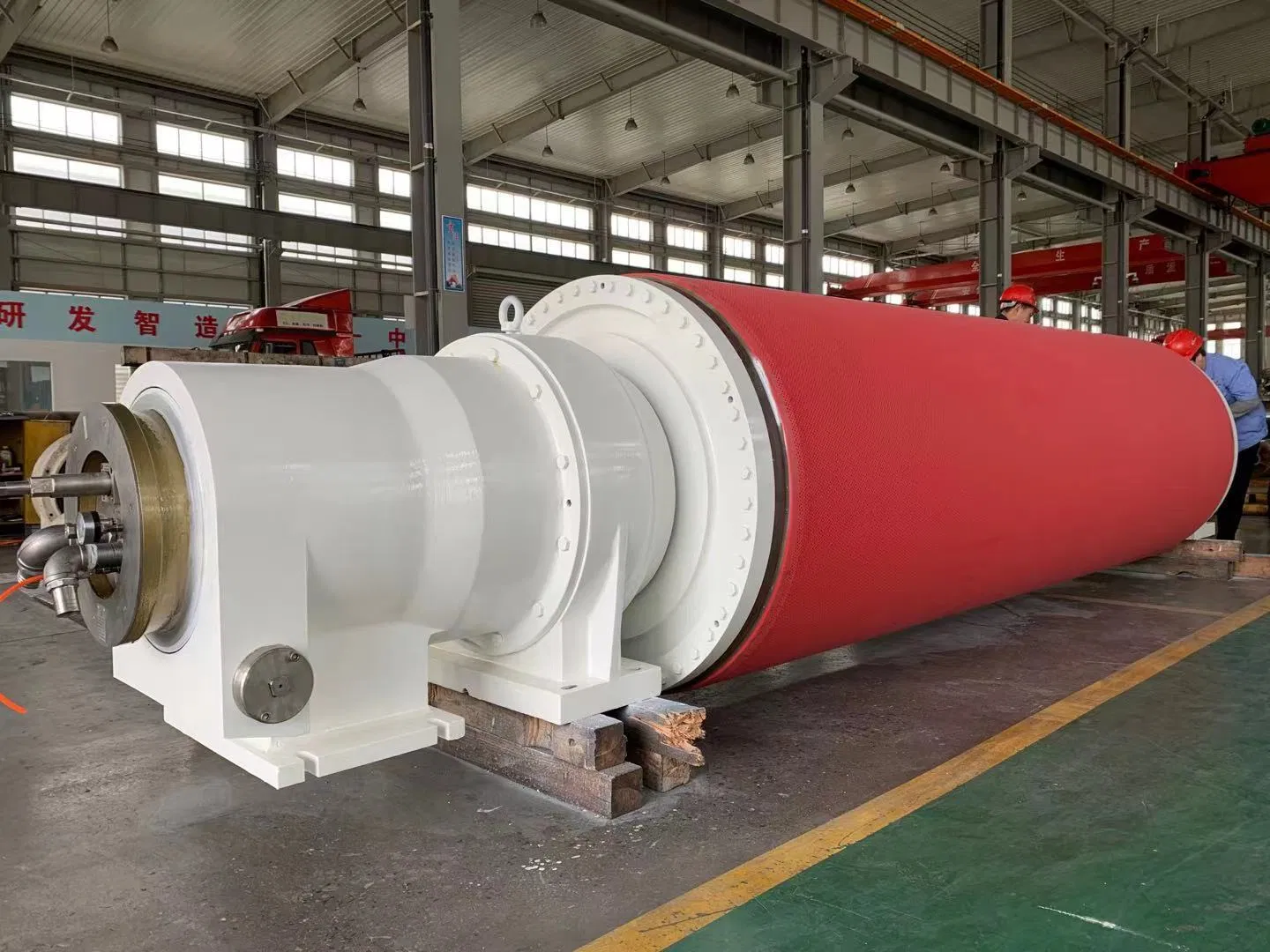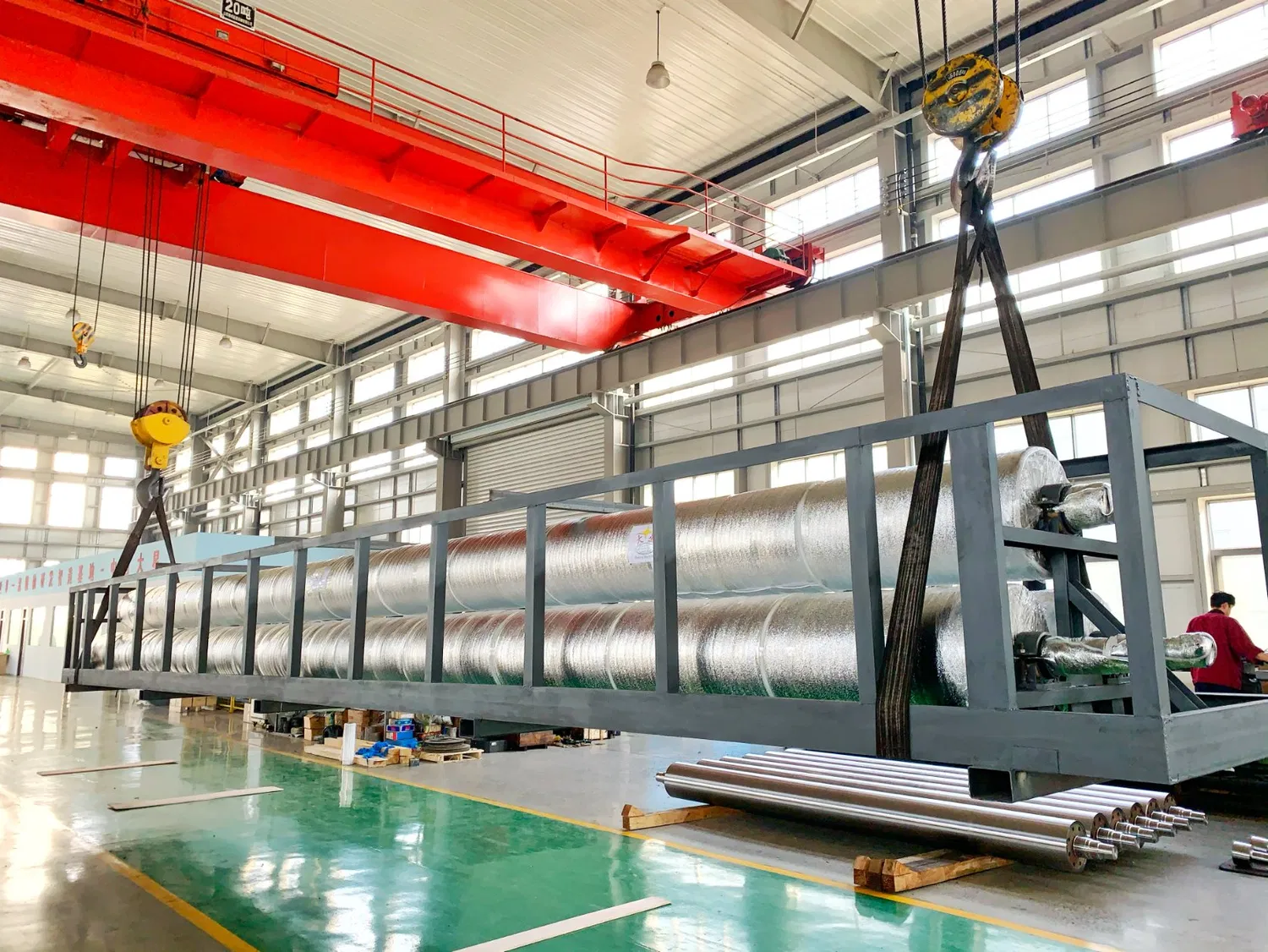The Unseen Backbone: Why Paper Machine Rolls Matter
The paper machine, often stretching hundreds of meters long, is a continuous operation where the paper web undergoes significant transformations. Each stage, from the wet end to the dry end, relies on a specific type of roll, meticulously designed and manufactured for its unique purpose. Have you ever wondered about the sheer forces and temperatures these components endure? It's truly remarkable. A paper machine roll manufacturer produces a diverse range of rolls, each with a distinct function. For instance, press rolls are crucial for dewatering the paper web, applying immense pressure to squeeze out moisture. Dryer rolls, often heated internally, facilitate the evaporation of remaining water, while calendar rolls are used to smooth and compact the paper surface, giving it the desired finish and thickness. Guide rolls ensure the paper web tracks correctly through the machine, preventing tears and wrinkles. Each of these rolls must operate with extreme precision, often at high speeds and under challenging environmental conditions, including high humidity, temperature fluctuations, and corrosive chemicals.The Critical Role of Precision Engineering
The performance of a paper machine hinges directly on the precision of its rolls. Even a microscopic imperfection can lead to significant issues, from uneven paper thickness and surface defects to costly machine downtime. This is why the engineering and manufacturing processes employed by a paper machine roll manufacturer are nothing short of art combined with science. They must account for factors like dynamic balancing to prevent vibrations, thermal stability to maintain consistent performance under varying temperatures, and surface hardness to resist wear and tear.Different Rolls, Different Demands
It's worth noting that the demands placed on different rolls vary significantly. A suction roll, for example, needs a precise pattern of drilled holes and a robust internal vacuum system to remove water, while a calender roll requires an exceptionally smooth and hard surface to impart a consistent finish. The materials used, the coatings applied, and the internal structures are all tailored to meet these specific operational requirements. This level of specialization underscores why partnering with an experienced paper machine roll manufacturer is non-negotiable for paper mills aiming for optimal production quality and efficiency.
What Defines a Leading Paper Machine Roll Manufacturer?
Identifying a truly leading paper machine roll manufacturer involves looking beyond mere production capacity. It's about a commitment to excellence that permeates every aspect of their operation. Many experts agree that core competencies include unparalleled expertise, cutting-edge technology, superior material science, and a deep understanding of the paper industry's evolving needs.Advanced Materials and Coatings
The choice of materials is paramount. High-quality steel, cast iron, and specialized composites are often used as the base, but it's the surface treatments and coatings that truly elevate a roll's performance. These can include chrome plating for hardness and corrosion resistance, rubber covers for specific pressing characteristics, or ceramic coatings for extreme wear resistance and release properties. A forward-thinking paper machine roll manufacturer continuously researches and develops new materials and coating technologies to improve roll longevity, reduce friction, and enhance paper quality. This innovation directly translates into lower operational costs and higher output for paper mills.State-of-the-Art Manufacturing Processes
Precision manufacturing is not just a buzzword; it's a fundamental requirement. Leading manufacturers invest heavily in advanced machinery, such as CNC grinding machines capable of achieving micron-level tolerances, dynamic balancing equipment that ensures smooth operation at high speeds, and sophisticated coating application systems. These technologies allow them to produce rolls that meet the most stringent industry standards, ensuring consistent performance and reliability. Frankly speaking, without these advanced capabilities, achieving the required precision for modern paper machines would be impossible.The Role of Research and Development
Interestingly enough, the best manufacturers aren't just building rolls; they're innovating. A significant portion of their resources is dedicated to Research and Development (R&D). This includes exploring new materials, developing more efficient manufacturing techniques, and designing rolls that can withstand increasingly demanding operational environments. They work closely with paper mills to understand emerging challenges, such as the need for lighter rolls, more energy-efficient designs, or rolls capable of handling new pulp types or additives. This proactive approach to innovation is a hallmark of a truly leading paper machine roll manufacturer.The Manufacturing Journey: From Concept to Roll
The creation of a paper machine roll is a meticulous process, a true testament to engineering prowess. It begins long before any metal is cut, with a deep dive into the specific requirements of the paper mill and the machine where the roll will operate.Precision Machining and Grinding
Once the design is finalized and materials are selected, the core manufacturing process begins. This typically involves rough machining of the roll body, followed by heat treatment to achieve the desired material properties. The critical phase is precision grinding, where the roll's surface is meticulously shaped to exact dimensions and surface finishes. This stage requires highly skilled technicians and state-of-the-art grinding machines capable of achieving incredibly tight tolerances, often measured in micrometers. Any deviation here can compromise the roll's performance and the quality of the paper produced.Balancing and Finishing Touches
After grinding, the roll undergoes dynamic balancing. This crucial step ensures that the roll rotates smoothly at high speeds without vibrations, which can cause wear, noise, and defects in the paper. Advanced balancing machines spin the roll and detect any imbalances, which are then corrected by adding or removing small amounts of material. Following balancing, various surface treatments and coatings are applied, depending on the roll's function. This might involve applying a rubber cover, a hard chrome layer, or a specialized composite coating. Each layer is applied with precision to ensure uniformity and optimal performance.Rigorous Quality Assurance
Throughout the entire manufacturing process, rigorous quality assurance checks are performed. This includes material inspections, dimensional checks after each machining stage, surface finish measurements, and non-destructive testing (NDT) to detect any internal flaws. The final inspection ensures that the roll meets all design specifications and performance criteria before it leaves the factory. This multi-stage quality control process is what guarantees the reliability and longevity of an industrial paper machine components from a reputable manufacturer.
Customization and Innovation: Meeting Industry Demands
The paper industry is constantly evolving, driven by demands for higher quality, increased efficiency, and more sustainable production methods. A leading paper machine roll manufacturer doesn't just produce standard components; they are adept at providing customized solutions and driving innovation to meet these changing needs.Tailored Solutions for Diverse Applications
Every paper machine is unique, and so are the demands placed on its rolls. Whether a mill is producing fine writing paper, robust packaging board, or absorbent tissue, the specific properties required from the rolls will differ. This is where the ability to provide custom paper mill rolls becomes a significant advantage. Manufacturers work closely with clients to understand their specific paper grades, machine speeds, operational temperatures, and desired outcomes. This collaborative approach ensures that the rolls are perfectly optimized for their intended application, leading to superior paper quality and reduced operational issues.Driving Efficiency Through Innovation
Innovation in roll design and materials is crucial for improving overall paper machine efficiency. For instance, developing lighter rolls can reduce energy consumption, while new coating technologies can extend roll lifespan, reducing the frequency of costly roll changes and maintenance. Addressing common challenges like wear, corrosion, and heat buildup through advanced engineering solutions is a continuous focus. Many experts agree that these incremental innovations, driven by a dedicated paper machine roll manufacturer, collectively contribute to significant long-term savings and environmental benefits for paper mills. It's about more than just making a part; it's about engineering a solution.Beyond Manufacturing: Support and Longevity
The relationship between a paper mill and its paper machine roll manufacturer extends far beyond the initial purchase. The longevity and performance of these critical components depend heavily on ongoing support, maintenance, and the ability to recondition them.Comprehensive After-Sales Support
A truly dedicated manufacturer provides comprehensive after-sales support, including installation guidance, operational training, and troubleshooting assistance. This ensures that the rolls are integrated seamlessly into the paper machine and perform optimally from day one. In my experience, prompt and knowledgeable technical support can be the difference between minor downtime and significant production losses. It's a partnership, not just a transaction.Extending Roll Lifespan Through Refurbishment
Given the significant investment in paper machine rolls, extending their lifespan through reconditioning and refurbishment services is highly cost-effective and environmentally responsible. A reputable paper machine roll manufacturer often offers these services, which can include regrinding worn surfaces, repairing damaged journals, replacing worn bearings, and reapplying specialized coatings. This process restores the rolls to their original specifications, significantly prolonging their operational life and providing a sustainable alternative to outright replacement. This commitment to the entire lifecycle of their products truly sets leading manufacturers apart. In conclusion, the role of a paper machine roll manufacturer is far more critical and complex than it might initially appear. They are the silent architects of paper quality and production efficiency, combining advanced engineering, material science, and precision manufacturing to create the indispensable components that drive the global paper industry. From the initial design to ongoing support and refurbishment, their expertise ensures that the paper we rely on daily continues to be produced with the highest standards of quality and sustainability. Partnering with a leading paper machine roll manufacturer is not just a choice; it's a strategic imperative for any paper mill aiming for excellence in today's competitive landscape.For more detailed information, please visit our official website:Paper machine roll manufacturer
About the author: Dr. Elias Thorne is a seasoned expert in industrial machinery and materials science, with over two decades of experience specializing in the pulp and paper industry. His work focuses on the engineering and application of high-performance components, including precision rolls for paper machines. Dr. Thorne frequently consults with leading manufacturers and mills, providing insights into optimizing production processes and enhancing equipment longevity through advanced material solutions.


